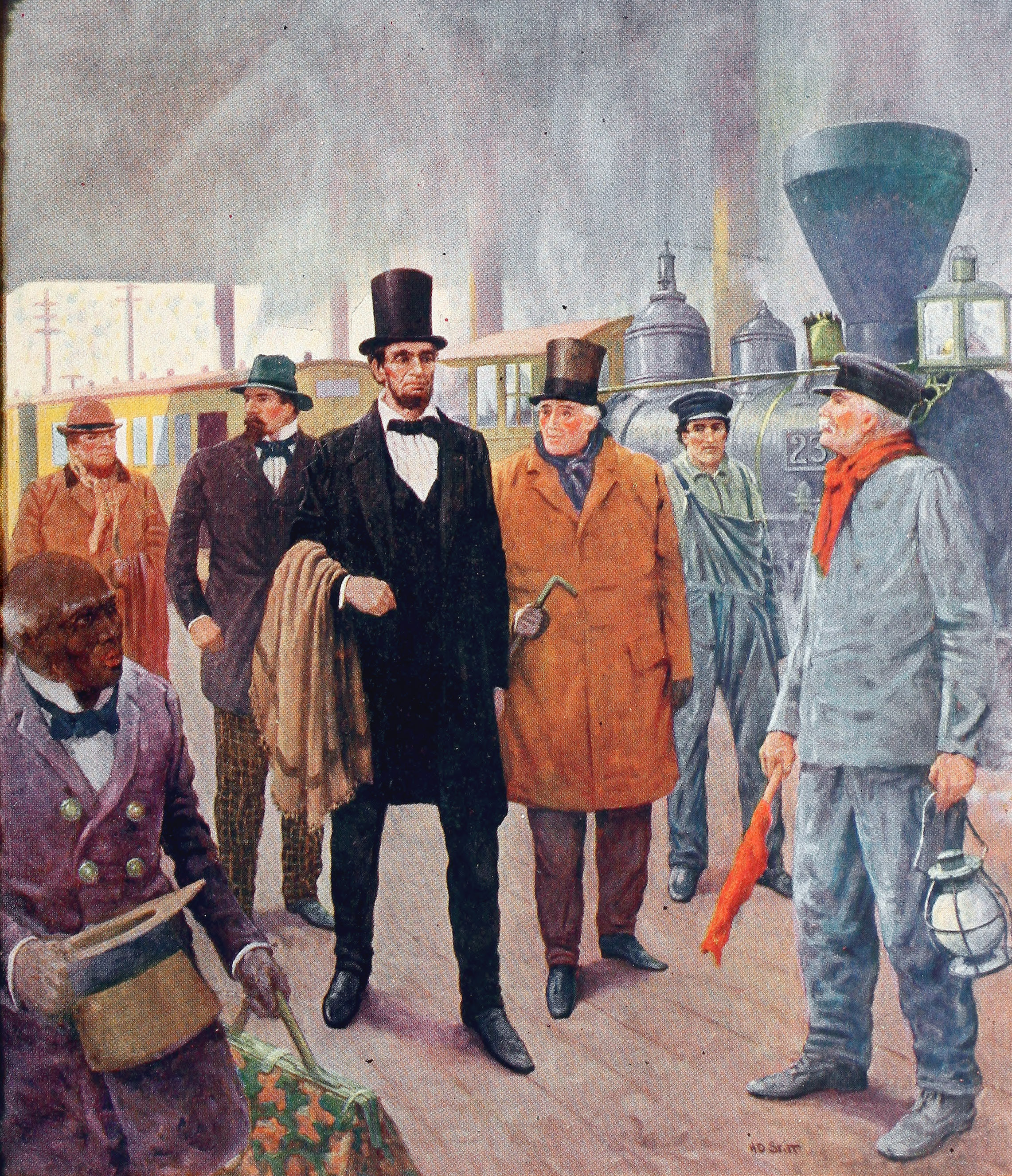
RAILROAD officials, particularly Mr. Felton, president of the Philadelphia, Wilmington and Baltimore Railroad, over which Mr. Lincoln was traveling, wished him to make a safe journey. All precautions had been taken. Rumors came that bridges on the railroad would be burned. For this reason, Mr. Felton gathered together some of the best detectives in the country and set them to whitewashing the bridges between the Susquehanna and Baltimore. This was an action which startled the people, who did not know that this whitewash consisted of salt and alum, which would tend to make the bridges fireproof.
Strange to say, there had been no invitation from Maryland's governor nor from her legislature to the new president to visit Maryland's capital; neither was there any invitation from the mayor of the city of Baltimore. Mr. Lincoln's party had met with several minor accidents in friendly towns, and he did not know what to expect in a city where there were no indications that the city authorities would endeavor properly to protect the party. The only invitations that were extended Mr. Lincoln from the city of Baltimore were from the proprietor of the Eutaw House, and from Mr. Gittings, president of the Northern Central Railroad.
The following account of the journey of Mr. Lincoln through the city of Baltimore was sent to the Magazine by the late John Ed. Spurrier, shortly before Mr. Spurrier's death.
“President A. Lincoln passed through Baltimore on the night of February 22, 1861. My understanding of President Lincoln's trip from the West to take his seat at Washington is from conversations which I overheard between Alex. Diffey, general superintendent of trains, and my grandfather, Thomas Spurrier.
“Mr. Lincoln was to arrive at Calvert or Bolton Station (N. C. R'y), Baltimore, via Harrisburg, Pa., but because of threats, the route was changed so that he would arrive via the Philadelphia, Wilmington, and Baltimore Railroad (President Street Depot). Here the Baltimore and Ohio Railroad teams would haul each car of the train via Pratt Street to Howard, and Howard Street into the Camden Station Yard.
“The entrance to the passenger yard from Howard Street crossed Camden Street, curved around the east end of the station building, the track running alongside the platform under the shed, where the passengers boarded and left the cars.
“The threatening crowd crowded the station platform from which the train was scheduled, on Mr. Lincoln's arrival, to depart. “But "Daddy" Smith, or "Tim" Murphy, in charge of the team hauling Mr. Lincoln's car, was instructed, on Pratt Street, to lead his team quietly through the back track, instead of to the platform. Engine 236 was on the back track, in readiness to take Mr. Lincoln's car to Washington. This worked fine, and while the threatening crowd awaited the arrival of Mr. Lincoln's car on the regular track, Mr. Lincoln was out of sight and on his way toward Washington. Another engine took the regular train. "Daddy" Smith, "Tim" Murphy and the others connected with this trip have passed away. My uncle, Alex. Diffey, and W. P. Smith had arranged the switch-off, as they arranged many others during the Civil War. Engine 236 was one of the finest engines of the day.”